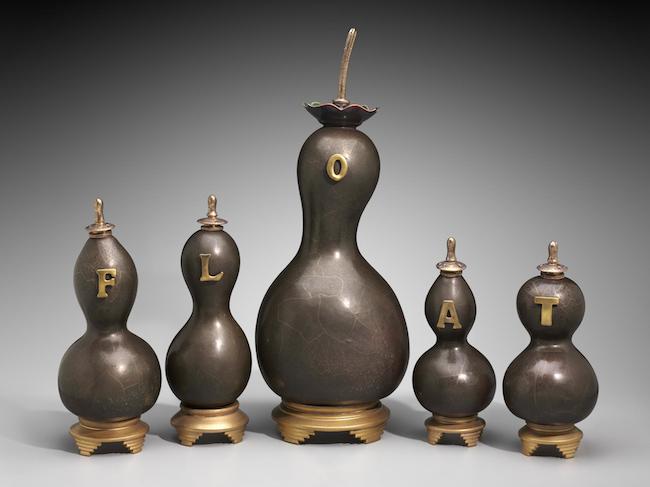Art lovers looking for a crash course in the history of modern American ceramics can go to the Bernard and Barbara Stern Shapiro Gallery at the Museum of Fine Arts Boston. Nature, Sculpture, Abstraction, and Clay: 100 Years of American Ceramics (Jan. 17, 2015 – Jan. 3, 2016) is exhibiting more than 70 works under three themes: sculpture and abstraction, nature and landscape and surface and decoration. The museum states that the works bridge functional and sculptural modes which connect the art of the past with contemporary art.
Above image: Adrian Saxe, Float/Aloft, ca. 1989
The show is receiving kind words from the press. Sebastian Smee writes for the Boston Globe:
“The exhibition as a whole demonstrates not only the range and innovation in so-called “art pottery” over the previous century, but unexpected kinds of continuity underlying so much invention.
“Walking into the exhibition is a delight. The vessels have been displayed in informal clusters on wide shelves protruding from three of the gallery’s four walls.
“Trying to cover so much ground in such a small space (and with three curators pitching in!) could have produced anarchy. In fact, the show gives off a remarkable sense of cohesion. This is partly thanks to rhymes and echoes established between forms across the room, but even more, I think, to the curators’ careful attention to colors.”

Cheryl Ann Thomas, December, 2013
The Economist spins the old yarn about how ceramics had to fight to be recognized as something other than craft:
“Given the ambition of these potters, it is not surprising that they were caught up in the 20th century’s many aesthetic revolutions, though in each case the translation into clay provided unique challenges and opportunities. Peter Voulkos worked harder than anyone to challenge the age-old alliance of ceramics with the utilitarian. His chunky, clunky “Untitled” from 1959-60 bears only the faintest resemblance to a traditional vessel. It is an abstract form, as wild and expressive as anything conjured by Jackson Pollock, slapped together as if by a drunken carpenter and splattered with eye-popping colours. No contrast greater to Bennett’s preciousness can be imagined, though both undercut the notion of ceramics as merely a utilitarian craft.”
This exhibition could be a good way to bring yourself up to speed on the last of century of the ceramic movement. Take a friend; maybe they’ll catch the bug, too.
Any thoughts about this post? Share yours in the comment box below.

Ralph Bacerra, Teapot and Stand, 2001

Work by Maija Grotell.

Work by Glenn Lukens.

Ceramic work by Wayne Higby.

Add your valued opinion to this post.